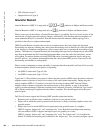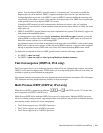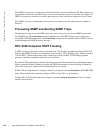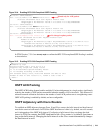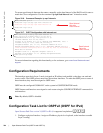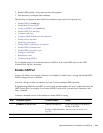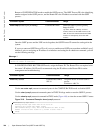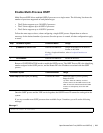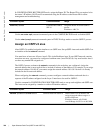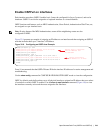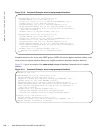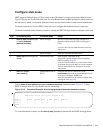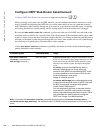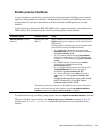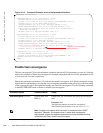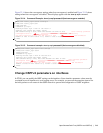
708 | Open Shortest Path First (OSPFv2 and OSPFv3)
www.dell.com | support.dell.com
In CONFIGURATION ROUTER OSPF mode, assign the Router ID. The Router ID is not required to be
the router’s IP address. Dell Force10 recommends using the IP address as the Router ID for easier
management and troubleshooting.
Use the
no router ospf process-id command syntax in the CONFIGURATION mode to disable OSPF.
Use the
clear ip ospf process-id command syntax in EXEC Privilege mode to reset the OSPFv2 process.
Assign an OSPFv2 area
After OSPFv2 is enabled, assign the interface to an OSPF area. Set up OSPF Areas and enable OSPFv2 on
an interface with the
network command.
You must have at least one AS area: Area 0. This is the Backbone Area. If your OSPF network contains
more than one area, you must also configure a backbone area (Area ID 0.0.0.0). Any area besides Area 0
can have any number ID assigned to it.
The OSPFv2 process evaluates the
network commands in the order they are configured. Assign the
network address that is most explicit first to include all subnets of that address. For example, if you assign
the network address 10.0.0.0 /8, you cannot assign the network address 10.1.0.0 /16 since it is already
included in the first network address.
When configuring the
network command, you must configure a network address and mask that is a
superset of the IP subnet configured on the Layer-3 interface to be used for OSPFv2.
Use this command in CONFIGURATION ROUTER OSPF mode to set up each neighbor and OSPF area.
The Area can be assigned by a number or with an IP interface address.
Command Syntax Command Mode Usage
router-id ip address CONFIG-ROUTER-O
SPF-id
Assign the Router ID for the OSPFv2
process.
IP Address: A.B.C.D
Command Syntax Command Mode Usage
network ip-address mask area area-id CONFIG-ROUTER-OSPF-id Enable OSPFv2 on an interface and
assign an network address range to a
specific OSPF area.
IP Address Format: A.B.C.D/M
Area ID Range: 0-65535 or A.B.C.D/M



